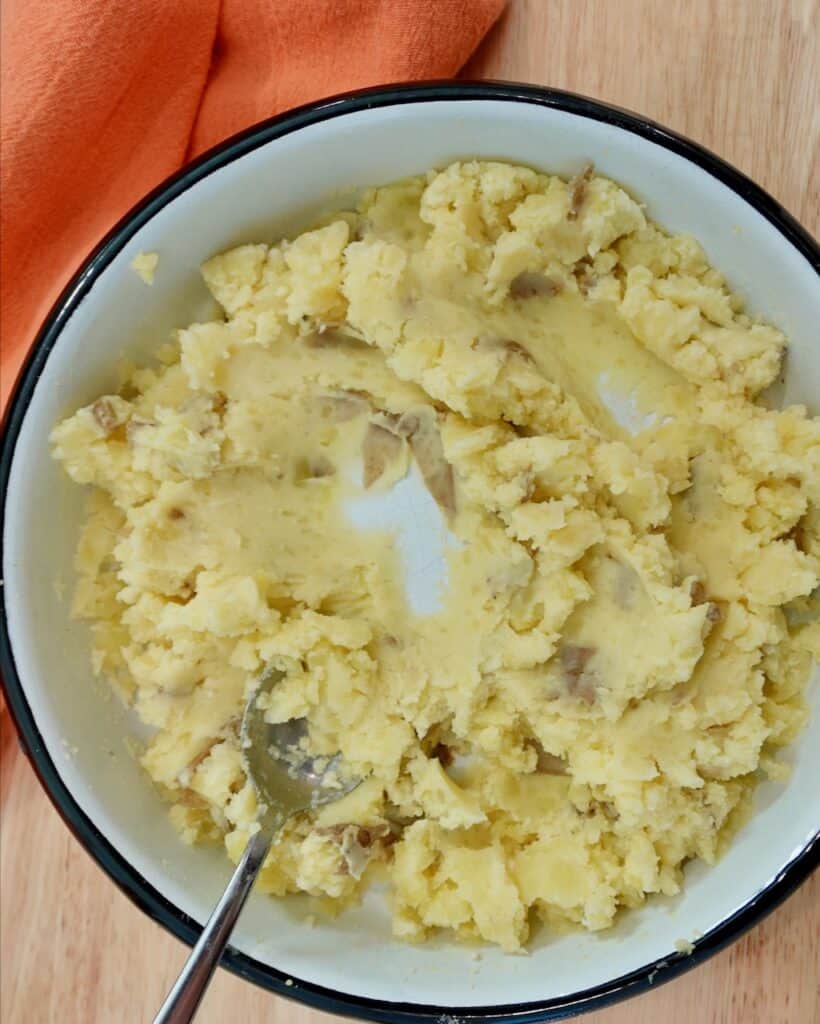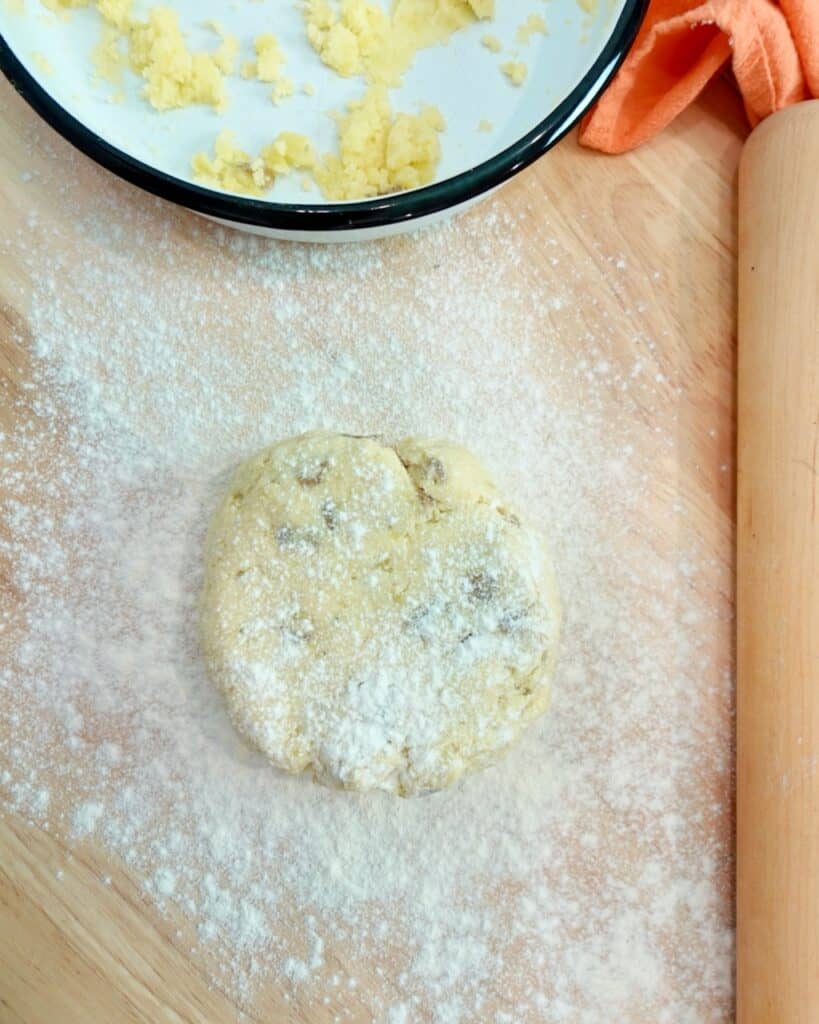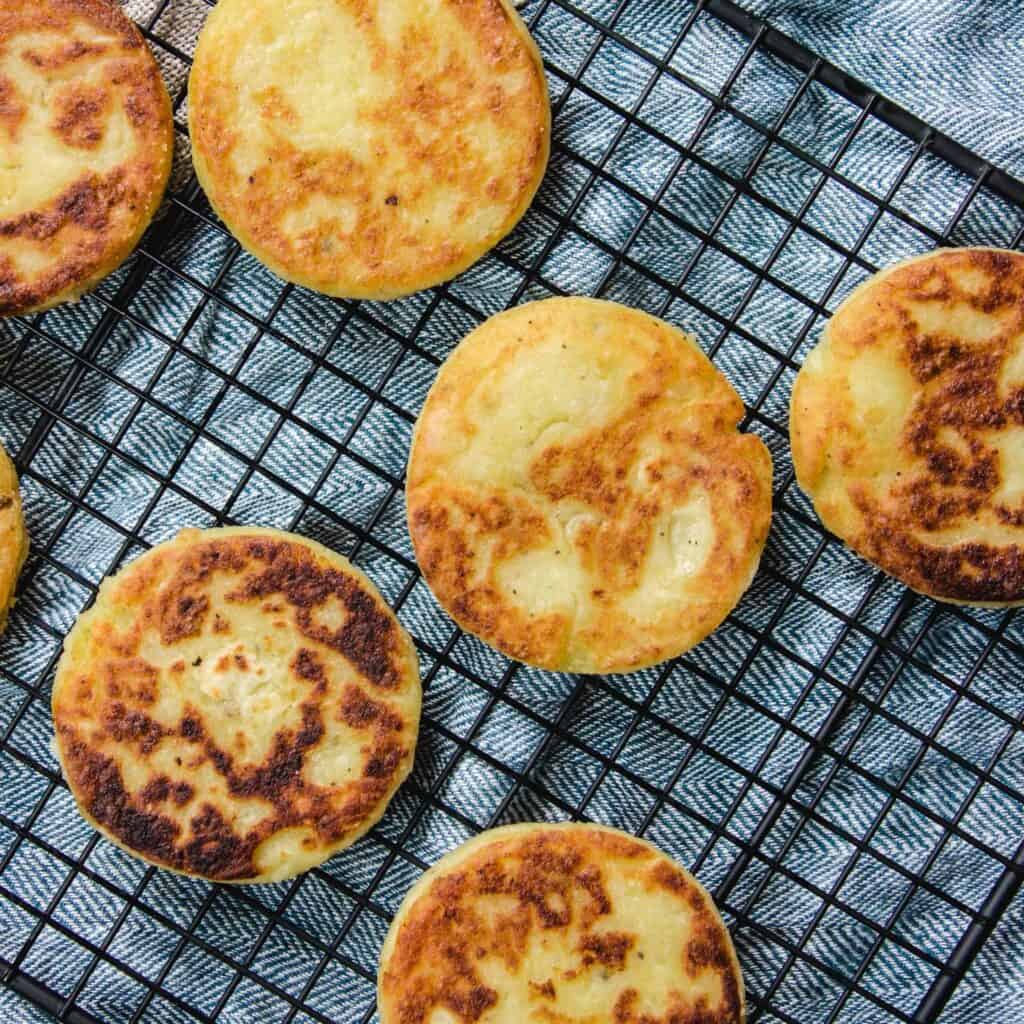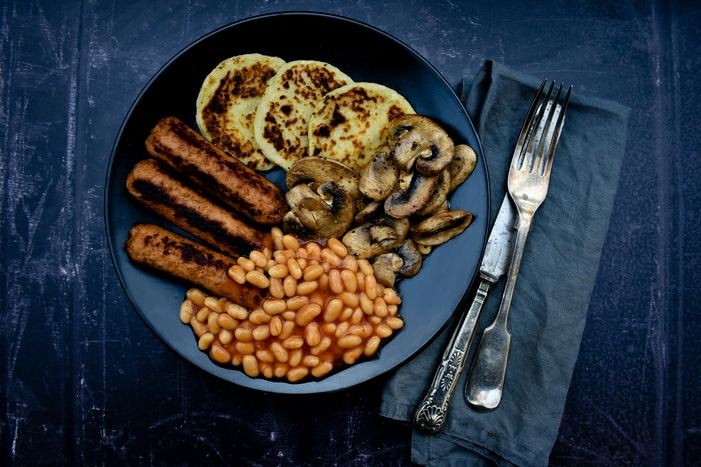Why Potato Scones Are The Best | A Scottish Culinary Masterpiece
Potato scones, also known as tattie scones, are a beloved staple of Scottish cuisine. These delicious, versatile flatbreads are typically made from a simple mixture of mashed potatoes, flour, butter, and salt. They're perfect for frying in a pan with your other breakfast foods, soaking up all those delicious flavors.
Author:Callum FraserNov 07, 202510.7K Shares170.6K Views
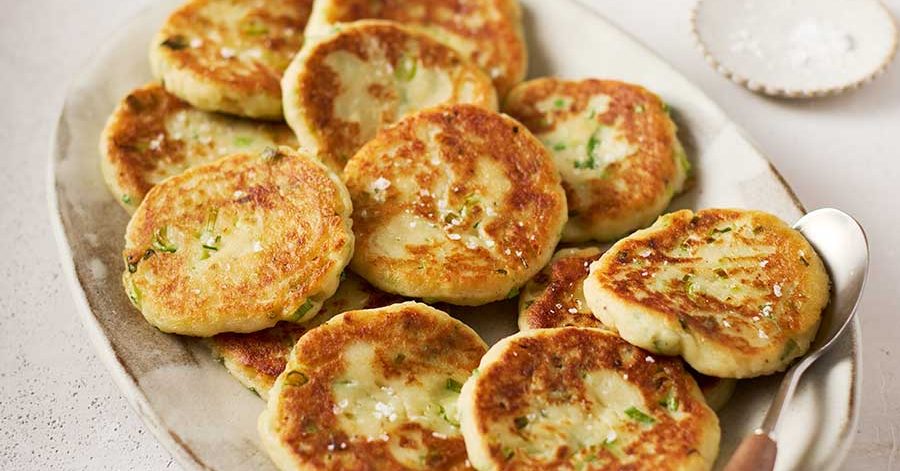
Why Potato Scones Reign Supreme
Their crispy exterior gives way to a fluffy, tender interior that practically melts in your mouth. While the breakfast world obsesses over trendy avocado toast and elaborate pancake towers, those in the know understand that potato scones or tattie scones, as they're affectionately called in Scotland, represent the pinnacle of breakfast perfection.
Having spent years perfecting the art of the traditional Scottish breakfast, I can confidently say that potato scones outshine every other breakfast staple. They're not just another side dish; they're the unsung heroes that transform an ordinary morning meal into an extraordinary culinary experience.
The combination of their unique texture, incredible versatility, and surprising nutritional benefits makes them superior to regular scones, toast, and even beloved breakfast classics like pancakes.
Key Takeaways:
- Born from Necessity: Potato scones emerged from the resourceful use of leftover mashed potatoes in Scottish and Irish kitchens, embodying sustainability and flavor.
- Simple & Perfect Ingredients: Made with just potatoes, flour, butter, and salt, highlighting the quality of each component. Floury potatoes like Maris Piper or King Edward are ideal.
- Unique Texture: They offer a crispy exterior and a fluffy, melt-in-your-mouth interior, unlike any other breakfast item.
- Nutritional Benefits: Potatoes provide essential nutrients like potassium, Vitamin C, fiber, and complex carbohydrates for sustained energy.
- Incredibly Versatile: Excellent with savory toppings (eggs, bacon, cheese), sweet accompaniments (honey, syrup), or as a base for breakfast sandwiches.
- Economical & Sustainable: An affordable way to use up leftovers, reducing food waste.
- Freezer-Friendly: Can be cooked straight from frozen, making meal prep convenient and ensuring consistent quality.
- Superior to Other Breakfasts: Outperforms regular scones, toast, and pancakes in terms of texture, nutrition, versatility, and ease of preparation.
The Historical Foundation Of Breakfast Excellence
A Heritage Born From Necessity
Potato scones emerged from the practical wisdom of Scottish and Irish kitchens, where resourceful cooks discovered that leftover mashed potatoes could be transformed into something spectacular. This tradition of using leftover mashed potatoes for breakfast has been passed down through generations, creating a dish that embodies both sustainability and flavor.
Unlike many breakfast foods that were developed for convenience or novelty, potato scones were born from genuine culinary need. Scottish families needed a way to make hearty, filling meals from simple ingredients, and they created something that would become a cornerstone of traditional breakfast culture.
What started as humble leftovers has evolved into a breakfast essential that forms a quintessential part of a full Scottish breakfast. This evolution speaks to the inherent superiority of potato scones; they've endured not because of marketing or trends, but because they consistently deliver exceptional taste and satisfaction.
The Scottish Heritage: More Than Just Food
Potato scones have deep roots in Scottish culinary tradition, originating as a resourceful solution to prevent food waste. Scottish households would often have leftover potatoes from the previous day's meal, and tattie scones were born as a clever way to repurpose them into something delicious.
The term "tattie" itself is a familiar Scottish word for potatoes, and these scones have been an integral part of Scottish culturefor centuries. Originally, they were made right after lunchtime using potatoes that were still warm in the pan, quickly mixed with flour, butter, and salt, then rolled out and baked on a griddle (a heavy flat iron pan with an arched handle).
Lady Clark of Tillypronie, a renowned Scottish lady known for her vast collection of 19th-century recipes, described homemade potato scones as "looking like very thin pancakes well browned, but soft, not crisp, and come up warm". This historical perspective highlights how potato scones have maintained their essential character throughout the centuries.
Easy Homemade Potato Scones

HOW TO MAKE POTATO SCONES | Scottish Tattie Scones Recipe
Making delicious potato scones at home is simpler than you think! Follow these steps to create this Scottish breakfast favorite.
What You'll Need
Ingredients
- 500g Potatoes: About 1 pound, choose a floury kind if you can.
- 25g Butter or Margarine: Roughly 2 tablespoons.
- 125g Self-raising Flour: About 1 cup.
- Salt and Pepper: To taste.
Equipment
- Saucepan
- Potato Masher
- Large Bowl
- Wooden Spoon
- Rolling Pin
- Non-stick Frying Pan
- Spatula
- Wire Rack
Let's Get Cooking!
1. Prepare The Potatoes
- Peel and Cut: Peel your potatoes and cut them into equal-sized halves or quarters.
- Boil: Put them in a saucepan, cover with cold water, and bring to a boil. Cook gently for 15-20 minutes, or until they're easily pierced with a fork.
- Mash: Drain the water and let the potatoes air dry for a few minutes. Then, mash them well with a potato masher.
- Season: Add the butter or margarine to the mashed potatoes and mix it in. Season with salt and pepper to your liking.
2. Make The Dough
- Combine: Transfer the mashed potatoes to a large bowl. Add the self-raising flour and mix it in with a wooden spoon until a dough forms.
- Adjust Flour: You might need a little more or less flour depending on how moist your potatoes are. The goal is a dough-like consistency that's not too sticky.
3. Shape And Cook The Scones
- Knead and Divide: Lightly flour your work surface. Tip the potato dough onto it and gently knead it for a short time. Divide the dough into 3 equal balls.
- Roll Out: Warm a non-stick frying pan over medium-high heat (don't add any oil or butter).
- Shape Scones: Take one ball of dough. Roll it out into a circle about 20cm (8 inches) wide and 5mm (1/4 inch) thick. Make sure to use plenty of flour on your surface and rolling pin to prevent sticking.
- Cut: Cut the circle into 4 even-sized triangles.
- Cook: Carefully transfer the potato triangles to your hot, dry frying pan using a spatula.
4. Finish Cooking
- Cook Both Sides: Let the potato scones cook, checking the underside every few minutes. Once one side is golden brown, flip them over to cook the other side.
- Cool: Once both sides are nicely colored, remove the scones from the pan and place them on a wire rack to cool completely.
- Repeat: Do the same with your remaining dough balls.
Serving Suggestions
Enjoy your potato scones warm with a generous spread of butter, alongside a full cooked breakfast, or tucked into a roll with sausages or bacon and your favorite sauce!
Important Tip For Best Results
Use a Digital Scale: For the most accurate baking, it's always best to use a digital scale and follow the metric measurements (grams and milliliters). While cup measurements are provided, they may not always be as precise.
Why Potato Scones Stand Apart From Regular Scones
The fundamental difference between potato scones and traditional scones lies in their very essence. While regular scones are typically sweet, fluffy, and cake-like, potato scones are unleavened flatbreads that offer a completely different texture and flavor profile.
Traditional scones: Rely on baking powder or cream of tartar for their signature rise, creating a light, airy texture that's perfect for afternoon tea with jam and cream. Potato scones, however, are made primarily from mashed potatoes mixed with flour and butter, creating a dense, satisfying texture that's more akin to a savory pancake.
This distinction is crucial: potato scones are griddle-cooked rather than oven-baked, giving them their characteristic crispy exterior and fluffy interior. They're also significantly thinner than regular scones, typically measuring only about 5mm thick when cooked.
Compelling Reasons Why Potato Scones Reign Supreme
Unmatched Texture And Mouthfeel
The texture of a perfectly prepared potato scone is unlike anything else in the breakfast world. The key to superior potato scones lies in achieving light, dry potatoes, with ricing them providing more air, creating a texture that's simultaneously substantial and delicate.
When you bite into a properly made potato scone, you experience:
- A slightly crispy exterior that provides satisfying resistance
- A fluffy, cloud-like interior that melts on your tongue
- A perfectly balanced density that feels substantial without being heavy
This texture profile is impossible to replicate with regular flour-based scones, which tend to be either too dense or too crumbly.
Superior Nutritional Profile
While regular scones are essentially flour, butter, and sugar, potato scones offer genuine nutritional advantages. Potatoes provide:
- Essential potassium for heart health and muscle function
- Vitamin C for immune system support
- Fiber for digestive health
- Complex carbohydrates for sustained energy release
The potato base means you're getting actual nutrients rather than empty calories, making potato scones a more wholesome breakfast choice.
Incredible Versatility In Preparation And Pairing
Potato scones can be eaten as is, fried in bacon fat for a traditional Scottish breakfast, toasted for convenience, or lightly fried in olive oil for a healthier crispy option. This versatility extends far beyond regular scones, which are typically limited to being served with butter and jam.
Potato scones excel with:
- Savory toppings like eggs, bacon, and cheese
- Sweet accompaniments like honey or syrup
- As a base for breakfast sandwiches
- In full cooked breakfasts, as the perfect complement to other dishes.
Economic And Environmental Benefits
Potato scones are one of the best ways to use up leftover mashed potatoes, making them an economical and environmentally conscious choice. Instead of wasting food, you're creating something delicious and nutritious.
This sustainability aspect gives potato scones a moral superiority over breakfast foods that require fresh ingredients and generate more waste.
Consistent Performance And Reliability
Homemade potato scones are infinitely better than what you can buy in shops and can be cooked straight from frozen. This reliability means you can prepare batches ahead of time and always have exceptional breakfast options available.
Cost-Effective Comfort Food
From an economic standpoint, potato scones represent exceptional value. The ingredients are inexpensive and readily available, making them an affordable way to create substantial, satisfying meals. They're also an excellent way to use up leftover mashed potatoes, reducing food waste while creating something delicious. Commercial potato scones from quality producers like McGhee's are also reasonably priced at around £1.10-£1.20 for a pack of six, making them accessible to all budgets.
Storage And Reheating Excellence
Unlike many breakfast items that must be consumed fresh, potato scones improve with proper storage and reheating. They can be stored in the refrigerator for several days and reheated in a toaster, frying pan, or under the grill with excellent results. For longer storage, potato scones freeze beautifully. They can be cooked frozen without thawing, making them perfect for meal planning. This convenience factor adds to their appeal as the ultimate breakfast staple.
How Potato Scones Compare To Other Breakfast Favorites
Versus Regular Scones
Regular scones, while pleasant, are fundamentally limited by their flour-heavy composition. They tend to be:
- More crumbly and less cohesive
- Higher in refined flour and sugar
- Less versatile in terms of pairing options
- More likely to become stale quickly
Potato scones, in contrast, maintain their moisture and texture better, offer superior nutritional value, and provide more flexibility in preparation and serving.
Versus Toast
While toast is convenient, it's nutritionally inferior and texturally one-dimensional. Potato scones provide:
- More complex flavors and textures
- Better nutritional density
- Greater satiety per serving
- More interesting presentation possibilities
Versus Pancakes
Pancakes require more time, ingredients, and skill to prepare consistently. Potato scones offer:
- Simpler preparation process
- Better make-ahead capabilities
- More balanced nutrition
- Greater versatility in serving styles
The Perfect Potato Scone: Key Techniques For Success
Achieving The Ideal Texture
The secret to exceptional potato scones lies in potato preparation. Using a ricer creates lighter, more airy potatoes compared to traditional mashing, resulting in superior texture. The potatoes should be:
- Completely dry after cooking
- Properly seasoned while warm
- Cooled sufficiently before mixing with flour
Mastering The Dough
The dough should not stick to your hands and should hold together without being overworked. This balance is crucial for maintaining the light texture that makes potato scones superior to heavier breakfast breads.
Cooking For Perfection
Cooking potato scones on a hot griddle until golden brown creates the perfect contrast between crispy exterior and fluffy interior. This technique, similar to potato pancakes, produces the characteristic golden-brown appearance that makes potato scones so visually appealing.
Creative Ways To Elevate Your Potato Scone Experience
Breakfast Sandwich Supreme
Use potato scones as the foundation for breakfast sandwiches, layering them with:
- Scrambled eggs and crispy bacon
- Smoked salmon and cream cheese
- Grilled vegetables and cheese
- Avocado and poached eggs
International Fusion
While respecting their Scottish heritage, potato scones adapt beautifully to international flavors:
- Mediterranean style with sun-dried tomatoes and herbs
- Mexican-inspired with jalapeños and cheese
- Indian-spiced with curry powder and cilantro
- Asian-influenced with sesame oil and scallions
Sweet And Savory Combinations
The neutral potato base makes these scones perfect for both sweet and savory applications, offering versatility that regular scones can't match.
Storage And Make-Ahead Strategies
Freezing For Convenience
Potato scones can be cooked straight from frozen, making it practical to prepare large batches. This convenience factor gives them a significant advantage over breakfast foods that require fresh preparation.
Proper Storage Techniques
Store cooked potato scones in airtight containers for up to three days, or freeze for up to three months. This longevity surpasses most other breakfast breads and pastries.
The Health Advantages Of Choosing Potato Scones
Sustained Energy Release
The complex carbohydrates in potatoes provide more sustained energy compared to the simple sugars found in many breakfast pastries. This means fewer mid-morning energy crashes and better overall satiety.
Lower Glycemic Impact
When prepared with minimal added sugars, potato scones have a more moderate glycemic impact than many breakfast alternatives, making them a better choice for blood sugar management.
Nutrient Density
The potato base provides essential nutrients that are absent in refined flour-based alternatives, making every bite more nutritionally valuable.
Regional Variations And Cultural Significance
Scottish Tradition
In Scotland, potato scones are typically served as part of a cooked Scottish breakfast but can be enjoyed any time of day. This flexibility demonstrates their superiority as an all-day food rather than a limited breakfast item.
Irish Influence
The Irish tradition of potato scones adds its regional variations, often incorporating butter and cream for extra richness, showing how different cultures have recognized and enhanced the basic superiority of this dish.
Modern Adaptations
Today's cooks have created vegan, gluten-free, and health-conscious versions, proving that the fundamental appeal of potato scones transcends dietary restrictions and preferences.
Expert Tips For Potato Scone Mastery
Temperature Control
Maintain consistent griddle temperature to ensure even cooking and prevent burning. A properly heated cooking surface is crucial for achieving the signature golden-brown exterior.
Seasoning Balance
Taste the potatoes during preparation and adjust salt levels as needed. Proper seasoning at each stage creates depth of flavor that elevates the final product.
Thickness Consistency
Roll the dough to a consistent thickness (approximately half an inch) to ensure even cooking throughout. This attention to detail separates exceptional potato scones from merely good ones.
Frequently Asked Questions
Can Potato Scones Be Flavored Or Customized With Additional Ingredients?
Yes, while the traditional potato scone recipe is simple, many people enhance it by adding ingredients such as diced scallions, shredded cheese, chopped ham, or herbs like parsley. These additions can add extra flavor and texture, making the scones more versatile for different meals or taste preferences.
What Is The Best Way To Reheat Potato Scones Without Losing Their Texture?
The ideal reheating methods are using a frying pan or griddle over medium heat to restore their crispy edges while keeping the interior soft. Toaster reheating is also effective for convenience. Avoid microwaving as it can make them rubbery or soggy.
How Do Potato Scones Compare Environmentally To Other Breakfast Breads?
Potato scones have a smaller environmental footprint because potatoes require less water and land compared to wheat. Their minimal ingredient list and simple processing also contribute to lower resource use, making them a more sustainable breakfast option.
Are Potato Scones Suitable For Freezing, And How Should They Be Stored?
Potato scones freeze very well. For best results, freeze them on the day of purchase or preparation in an airtight container or freezer bag. They can be cooked directly from frozen or thawed in the fridge overnight before reheating.
Can Potato Scones Be Part Of A Gluten-free Diet?
Traditional potato scones contain wheat flour, but gluten-free versions can be made by substituting wheat flour with gluten-free flour blends. Some commercial brands also offer gluten-free potato scones made with rice flour and potato flakes, suitable for those with gluten intolerance or celiac disease.
Conclusion
After years of exploring breakfast options from around the world, I keep returning to the humble perfection of potato scones. They represent everything we should want from our morning meal: nutrition, flavor, versatility, and satisfaction. While food trends come and go, potato scones endure because they fundamentally deliver on the promise of a great breakfast.
Potato scones are essential when creating a good old-fashioned classic Scottish breakfast, but their appeal extends far beyond tradition. They're a testament to the wisdom of simple, well-executed cooking that prioritizes substance over spectacle.
The next time you're planning breakfast, consider the superior choice. Skip the ordinary and embrace the extraordinary. Your taste buds, your health, and your satisfaction levels will thank you for choosing potato scones, the ultimate breakfast champion that's been hiding in plain sight all along.
Jump to
Why Potato Scones Reign Supreme
Key Takeaways:
The Historical Foundation Of Breakfast Excellence
The Scottish Heritage: More Than Just Food
Easy Homemade Potato Scones
What You'll Need
Let's Get Cooking!
Serving Suggestions
Why Potato Scones Stand Apart From Regular Scones
Compelling Reasons Why Potato Scones Reign Supreme
How Potato Scones Compare To Other Breakfast Favorites
The Perfect Potato Scone: Key Techniques For Success
Creative Ways To Elevate Your Potato Scone Experience
Storage And Make-Ahead Strategies
The Health Advantages Of Choosing Potato Scones
Regional Variations And Cultural Significance
Expert Tips For Potato Scone Mastery
Frequently Asked Questions
Conclusion

Callum Fraser
Author
Callum Fraser isn't just a writer about Scotland; he's a product of its rugged landscape and rich history. Born and raised in Perthshire, with the Highlands as his backyard, his love for the nation's stories was kindled by local storytellers and long walks through ancient glens.
This passion led him to pursue a degree in Scottish History from the University of Edinburgh. For over 15 years, Callum has dedicated himself to exploring and documenting his homeland, fusing his academic knowledge with essential, on-the-ground experience gained from charting road trips through the Cairngorms, hiking the misty Cuillins of Skye, and uncovering the secrets of traditional recipes in his family's kitchen.
As the Editor-in-Chief and Lead Author for Scotland's Enchanting Kingdom, Callum's mission is simple: to be your most trusted guide. He combines meticulous research with a storyteller's heart to help you discover the authentic magic of Scotland — from its best-kept travel secrets to its most cherished traditional recipes.
Latest Articles
Popular Articles
